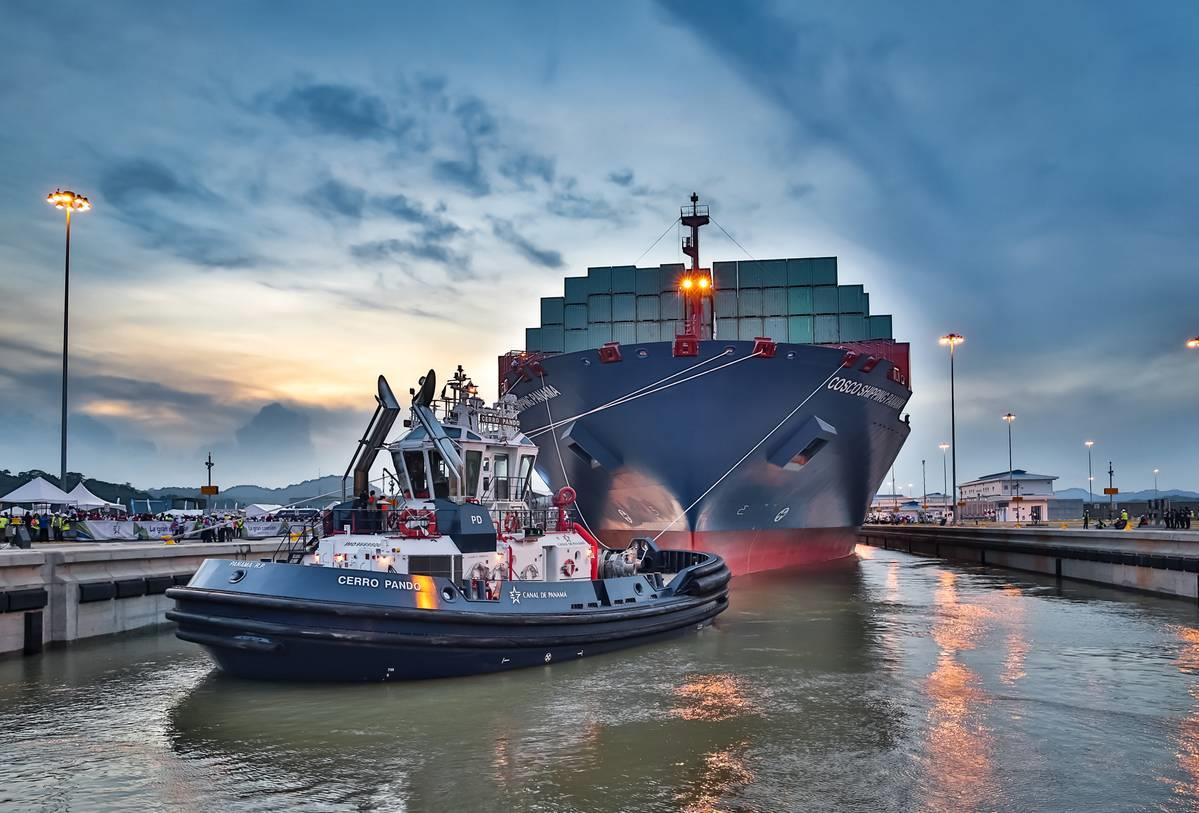New Reservoir To Aid Panama Canal
Canal authorities consider it urgent to build a new reservoir to supply fresh water to the route used by large cargo ships every day and also to meet the growing demand for water for human consumption by two million Panamanians.
But the project was held up by a 2006 regulation that prevented the Panama Canal from extending the border of its Hydrographic Basin.
That made it impossible to create the reservoir that the canal authorities planned at a cost of 1.6 billion dollars.
The Panama Canal draws fresh water from two nearby lakes to allow commercial ships to pass through, making it one of the most important shipping routes in the world.
Since last year, it has had to limit the number of ships and their draft due to a widespread drought that reduced the water supply.
Now, progress can be made on the construction of the new reservoir, which will take at least six years and requires agreements with the communities that will be affected by such a mega-project.
The waterway authorities made the projection last week at a press conference called to explain the consequences of a recent Supreme Court ruling that redefined the boundaries of the Panama Canal Watershed.
The ruling declared a 2006 law unconstitutional, thereby restoring the boundaries of the basin established in a previous law that had been repealed.
In other words, the ruling expands the territory of the Canal Hydrographic Basin on the western side, where they plan to build the reservoir or what they call a multipurpose reservoir in the Río Indio basin.
The project will also meet the growing demand for water for consumption by half of the country's population of more than four million people.
The authorities stressed that before setting a start date for the project, an understanding must be reached with the inhabitants of the Río Indio basin, which covers 580 square kilometers and is home to more than 200 communities with more than 12,000 inhabitants.
The Canal's deputy administrator, Ilya Espino, estimated that talks for an agreement with these communities could take up to a year and a half and that the construction of the reservoir between three and four years.
That is to say, if these deadlines are met, in about six years the country would have a new reservoir that would complement the freshwater lakes that traditionally supply the canal and the consumption of more than two million Panamanians.
Canal authorities have warned that if nothing is done within ten years, the water resources needed for the canal and for human consumption could be seriously compromised.
Of the estimated $1.6 billion that the project will cost, some $1.2 billion correspond to its construction and $400 million more to care for the affected communities, among other aspects, according to Vásquez.
"The important thing is that beyond the Panama Canal, these reservoirs are required to ensure that Panamanians have water to drink," the administrator stressed in reference to Río Indio. "But this must be done in agreement with the communities. We must reach a certain level of understanding." he stressed.

Legal Disclaimer:
MENAFN provides the
information “as is” without warranty of any kind. We do not accept
any responsibility or liability for the accuracy, content, images,
videos, licenses, completeness, legality, or reliability of the information
contained in this article. If you have any complaints or copyright
issues related to this article, kindly contact the provider above.
Most popular stories
Market Research

- Brazil Edtech Market Size, Share, Trends, And Forecast 2025-2033
- Vietnam Vegan Food Market Size, Share, Trends And Report 2025-2033
- Cryptogames Introduces Platform Enhancements Including Affiliate Program Changes
- Accounting And Bookkeeping Service Business Plan 2025: How To Start, Operate, And Grow
- USDT0 And Xaut0 Are Now Live On Polygon
- Global Open Banking Market 20252033: Services, Deployment & Distribution Trends






















Comments
No comment